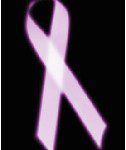 October is Breast Cancer Awareness Month, and there are few of us who do not automatically identify the pink ribbon as symbolic of the fight against this terrible disease. From your coffee shop to your sporting goods store, there is no end to the amount of “pink” merchandise that is marketed this month, the purchase of which makes us all feel like we are contributing in some small way to raise money for breast cancer research.
October is Breast Cancer Awareness Month, and there are few of us who do not automatically identify the pink ribbon as symbolic of the fight against this terrible disease. From your coffee shop to your sporting goods store, there is no end to the amount of “pink” merchandise that is marketed this month, the purchase of which makes us all feel like we are contributing in some small way to raise money for breast cancer research.
Perhaps it is that good feeling we get when munching on pink candies or giving a gift of a sparkly pink bracelet that makes articles such as “What’s Behind the Pink of Breast Cancer Awareness Month?” so jarring.
The opinion piece, which appeared in the OpEd section of the Los Angeles Times on October 16th, makes us take a step back from the all of the pink hype and re-focus our energies and our attention on the actual cause that we are trying to help by shopping for pink underwear and neckties.
In her thoughtful piece, Patt Morrison, LA Times columnist, wonders how much good these types of campaigns actually do. According to Morrison, “the world of breast cancer causes is awash in pinkwashing,” asking the excellent question “what does it really mean, that anodyne marketing phrase, “a portion of the proceeds from this product will be donated to help fight breast cancer”?
Morrison cites the breast cancer activists Breast Cancer Action, who have taken the entire pink product movement to task for what they say is promoting the purchase of many products that actually contain the toxins that may cause breast cancer to begin with (cleaning products with chemicals, food products that contain hormones, etc.)
Like any type of marketing campaign, even one for an excellent cause such as breast cancer research, the answer must lie in the age-old warning to consumers: Caveat Emptor, or “let the buyer beware.”
It is completely fine for you, the person spending money on a “pink” product, to ask the store clerk or manager “how much money from the purchase of this product is actually going to help fund breast cancer research?” If the clerk or manager is unable to answer your question, hopefully they will offer to look into it for you, or else you could contact the store’s corporate offices for further clarification.
We would like to not be overly cynical and we do believe that most organizations, whether it be your favorite sports team or candy maker, are trying to do a good thing by “pinkefying” in October. Hopefully, by raising overall awareness about breast cancer, more people might consider making a direct donation to a cancer charity (in addition to buying whatever “pink” products they like). Even more importantly, seeing pink will hopefully help as a reminder for the importance of regular self-examination, doctor’s appointments, and mammograms.
